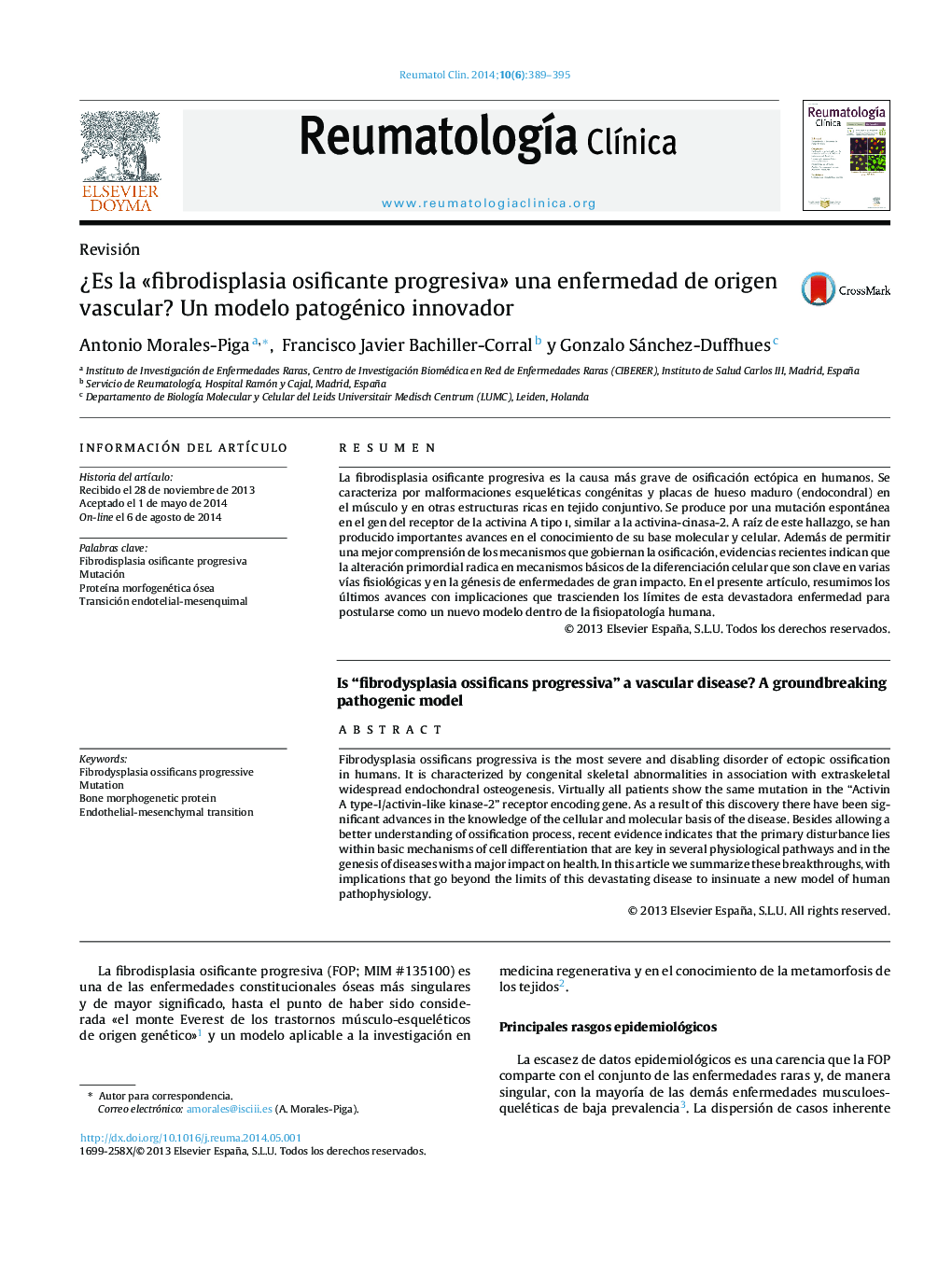| Article ID | Journal | Published Year | Pages | File Type |
|---|---|---|---|---|
| 3382858 | Reumatología Clínica | 2014 | 7 Pages |
ResumenLa fibrodisplasia osificante progresiva es la causa más grave de osificación ectópica en humanos. Se caracteriza por malformaciones esqueléticas congénitas y placas de hueso maduro (endocondral) en el músculo y en otras estructuras ricas en tejido conjuntivo. Se produce por una mutación espontánea en el gen del receptor de la activina A tipo i, similar a la activina-cinasa-2. A raíz de este hallazgo, se han producido importantes avances en el conocimiento de su base molecular y celular. Además de permitir una mejor comprensión de los mecanismos que gobiernan la osificación, evidencias recientes indican que la alteración primordial radica en mecanismos básicos de la diferenciación celular que son clave en varias vías fisiológicas y en la génesis de enfermedades de gran impacto. En el presente artículo, resumimos los últimos avances con implicaciones que trascienden los límites de esta devastadora enfermedad para postularse como un nuevo modelo dentro de la fisiopatología humana.
Fibrodysplasia ossificans progressiva is the most severe and disabling disorder of ectopic ossification in humans. It is characterized by congenital skeletal abnormalities in association with extraskeletal widespread endochondral osteogenesis. Virtually all patients show the same mutation in the “Activin A type-I/activin-like kinase-2” receptor encoding gene. As a result of this discovery there have been significant advances in the knowledge of the cellular and molecular basis of the disease. Besides allowing a better understanding of ossification process, recent evidence indicates that the primary disturbance lies within basic mechanisms of cell differentiation that are key in several physiological pathways and in the genesis of diseases with a major impact on health. In this article we summarize these breakthroughs, with implications that go beyond the limits of this devastating disease to insinuate a new model of human pathophysiology.
